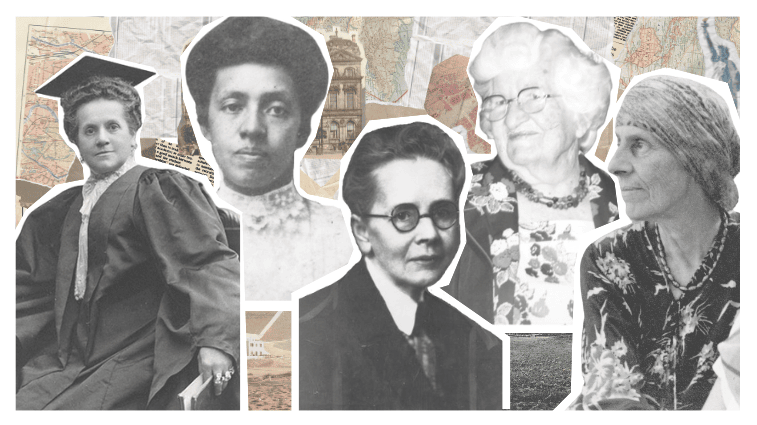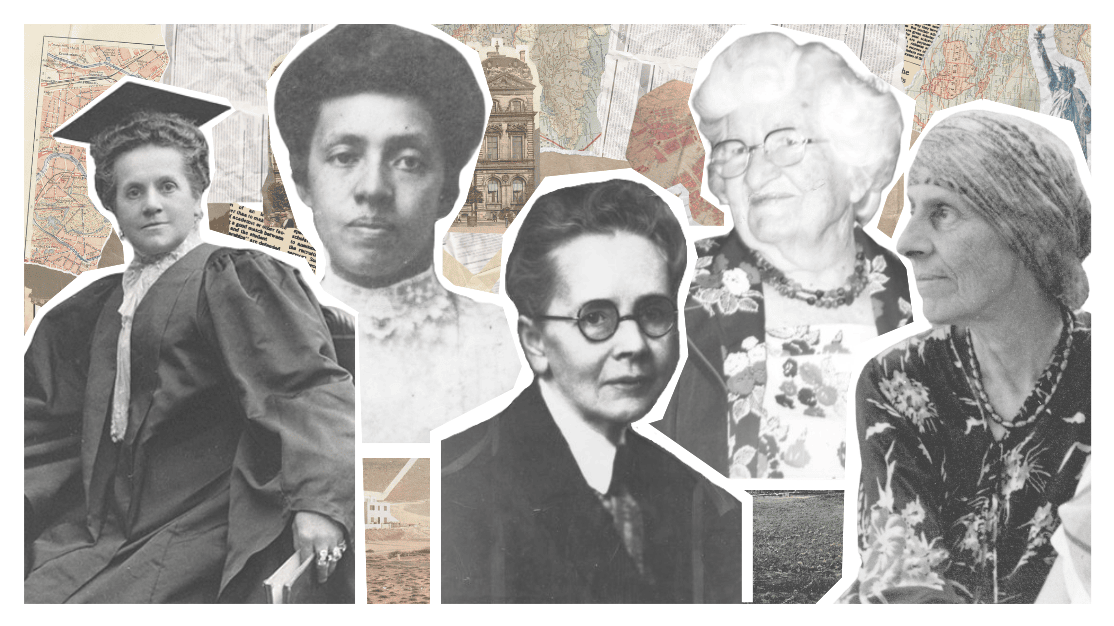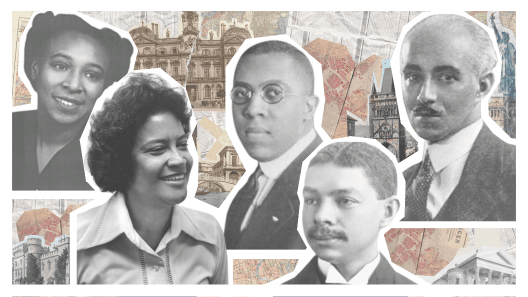
Building Inclusivity: Women Who Paved the Way
As part two of our “building inclusivity” series, this March we will be celebrating the long history of women in the construction field; from empowering stories of accomplishment to unveiled hidden histories, this article seeks to uncover the lesser-known voices that helped build this industry.
Last month, we highlighted prominent Black architects and engineers in US history, in honor of Black History month. Check out that article here!
Emily Warren Roebling
1843 - 1903
Known for: Engineering
At a time when women did not (and often could not) pursue academic achievement, Emily Warren Roebling’s love for learning was both a blessing and a curse. She achieved up to a high school education until marrying Washington Roebling, a civil engineer, in 1865. Washington and his father, John A. Roebling, were working on a project that would connect Manhattan and the growing city of Brooklyn by a suspension bridge – a novel concept for the time. The two landmasses were as yet only traversable by ferry, stifling Brooklyn’s economic potential. After John died due to a tragic accident while working on the project, Washington took the lead, only to later suffer severe decompression sickness from prolonged exposure to pressurized conditions. He never fully recovered, and became permanently bedridden.
Instead of abandoning the cursed project, Emily began serving as both Washington’s caretaker and liaison. Her leadership became so essential to the project that she was considered chief engineer in all but name. She also continually reassured officials that her husband was still capable of leading the project despite his poor health, so she could continue acting as his spokesperson. The pretense of a secondary role allowed Emily to lead the project to completion, despite 19th century societal restrictions.
Emily received little official recognition for her contributions. American industrialist Abram S. Hewitt was the only public figure to acknowledge her by name, declaring that the bridge would “ever be coupled” with the thought of Emily Warren Roebling. Posthumous acknowledgements of her contributions are more generous, and many scholars today agree that the Brooklyn Bridge would not be standing without her.
Elizabeth Carter Brooks
1867 - 1951
Known for: Architecture, Real Estate Development
Not only is Elizabeth Carter Brooks notable for making history as the one of the first female African-American architects, but also for her contributions to historical preservation and social justice in the Northeast. She became involved in teaching and community organizing early in her life, spearheading many important efforts to challenge discrimination. Her dedication to social justice even led her to leadership positions at the newly formed National Association for the Advancement of Colored People (NAACP), among other organizations.
Brooks’ career in architecture began out of her passion for community; in 1897, she founded and designed housing for the New Bedford Home for the Aged, the first nursing home in New Bedford. She also planned and supervised the building of the Phillis Wheatley YWCA in Washington, DC. Elizabeth prioritized real estate projects that preserved her city’s history, including a notable investment to preserve the home of Sergeant William H. Carney, an African-American Civil War hero who fought for his own freedom. Her legacy is immortalized in the Elizabeth Carter Brooks School, a New Bedford public school that was renamed after her death in 1957.
Marion Mahony Griffin
1871 - 1961
Known for: Architecture
While she is most known as Frank Lloyd Wright’s protege, Marion Mahony Griffin was a highly successful architect in her own right, whose contributions to the field should not be understated. Her architectural renderings were considered exceptional; critic Reyner Banham even declared her the “greatest architectural delineator of her generation,” an oft-echoed sentiment amongst her peers
After graduating from MIT in 1894, the second woman to receive an architectural degree from the university, Mahony began working for Frank Lloyd Wright in Chicago. Unlike most architects at the time – and working professionals in general – Wright was unusually open to hiring women. During this time, she contributed woodblock print renderings, use of stained glass and murals, and furniture designs, all of which would eventually be considered Wright’s signatures. The acclaimed architect was reluctant to credit her influence, but his son later acknowledged her contributions.
However, after Wright abandoned his firm and family for another woman, Mahony parted ways. In 1911, she became partners with architect Walter Burley Griffin in both business and marriage, and the two continued their work in Australia and India. Some of her most notable projects include the Adolph Mueller House, Henry Ford Residence, and the Capitol Theatre in Melbourne.
Julia Morgan
1872 - 1957
Known for: Architecture
Over the course of her 46-year career, Julia Morgan amassed a portfolio of projects rivaling even the most renowned architects of her time. She is celebrated for designing Hearst castle, the home of newspaper publisher and politician William Randolph Hearst.
Morgan faced prejudice in her early career, and was initially rejected from her architectural studies on the basis of gender. However, she was able to gain admission after a 2-year hiatus, and eventually became the first female graduate of the École des Beaux-Arts in 1902, then regarded as the world’s preeminent architecture school.
As one of the first architects to utilize reinforced concrete, she gained recognition for her seismic-resistant structures, essential to California-based projects. Some of her most important work includes a redesign of the landmark Fairmont Hotel in San Francisco, after it suffered earthquake damage, six buildings for the campus of Mills College, a women’s college, and various projects for the Young Women's Christian Association (YWCA). Of course, Hearst Castle remains her magnum opus, and the structural integrity of its complex design remains a testament to her talent today. She demonstrated a dedication to women’s organizations and suffrage throughout her life.
Elsie Eaves
1898 - 1983
Known for: Engineering
As the first woman to be a member of the American Society of Civil Engineers (ASCE), Elsie Eaves paved the way for women interested in engineering.
After obtaining her degree in civil engineering from the University of Colorado Boulder in 1920, she worked for the U.S. Bureau of Public Roads, the Colorado State Highway Department, and the Denver and Rio Grande Railroad as a draftsman. Later in her career, she began conducting research and managing publications for Engineering News-Record (ENR). Some of this research shaped the nation in vital ways, such as her work directing “Post War Planning” construction efforts to revitalize the industry after World War II. She also originated and compiled the first national inventory of municipal and industrial sewage disposal facilities.
Even in retirement, she continued her work, by advising various committees in the industry on housing and construction costs. In 1979, the American Association of Cost Engineers (ASCE) awarded her an honorary membership in recognition of her achievements.
Conclusion
As a minority-owned business for over 30 years, Outsource Consultants, Inc. is dedicated to an environment where diversity thrives. We currently hold MBEs in the states of New York and New Jersey, as well as the city of New York. We also recently acquired an MBE-certification with the SCA, and we’re excited to expand our already extensive project portfolio. For SCA-related projects, please reach out to Kaela Fanning at kfanning@outsourceconsultants.com.
For all other building code, zoning, and expediting projects, you can access our expert assistance at outsourceconsultants.com.








